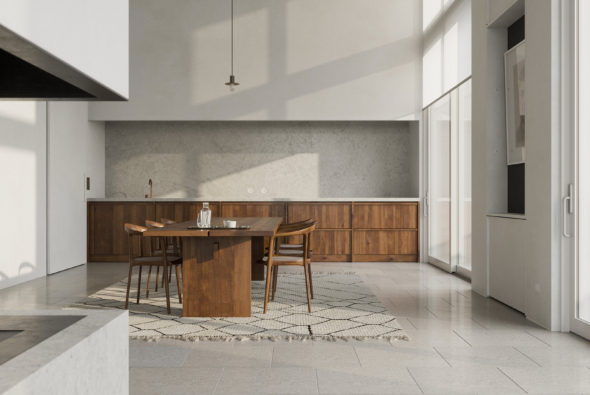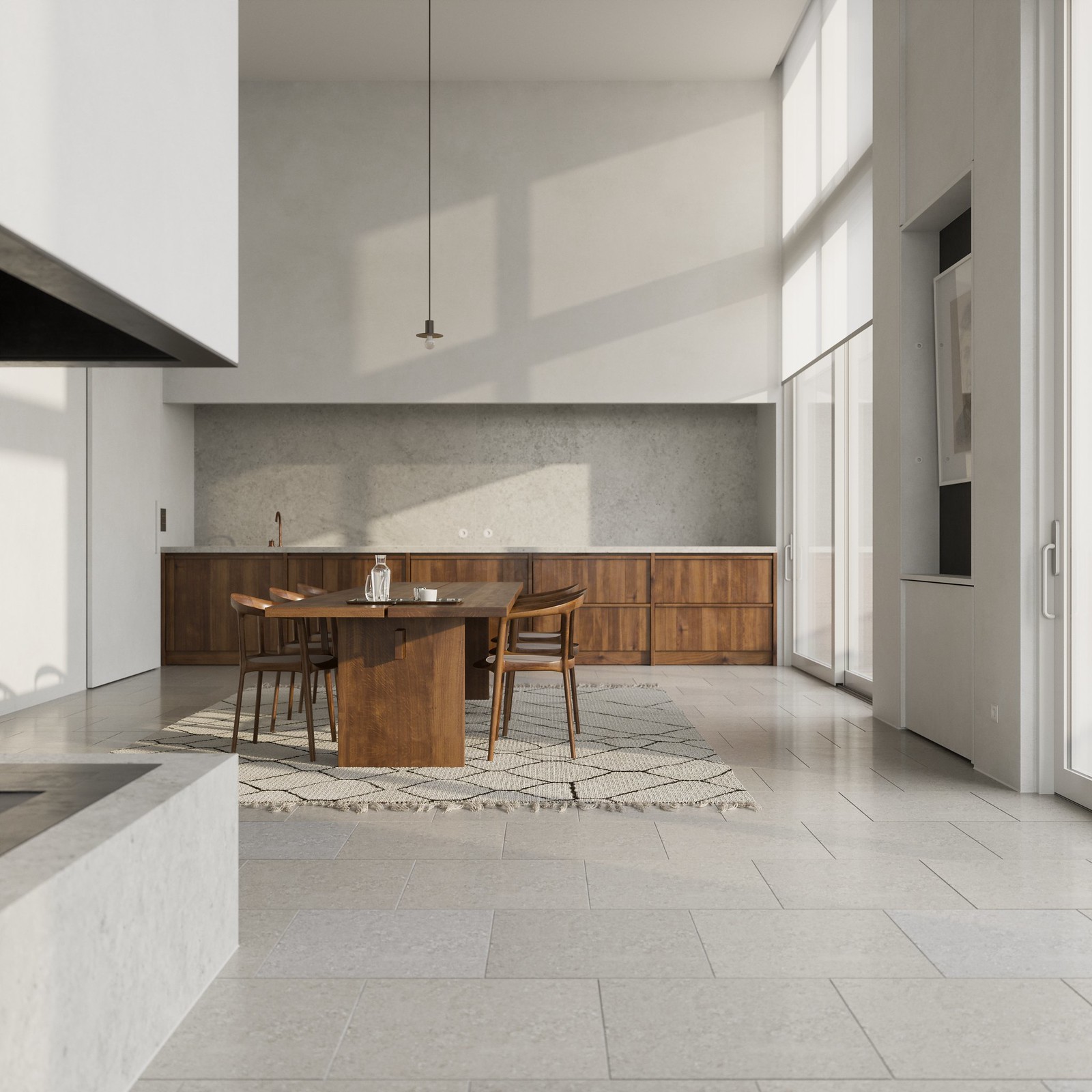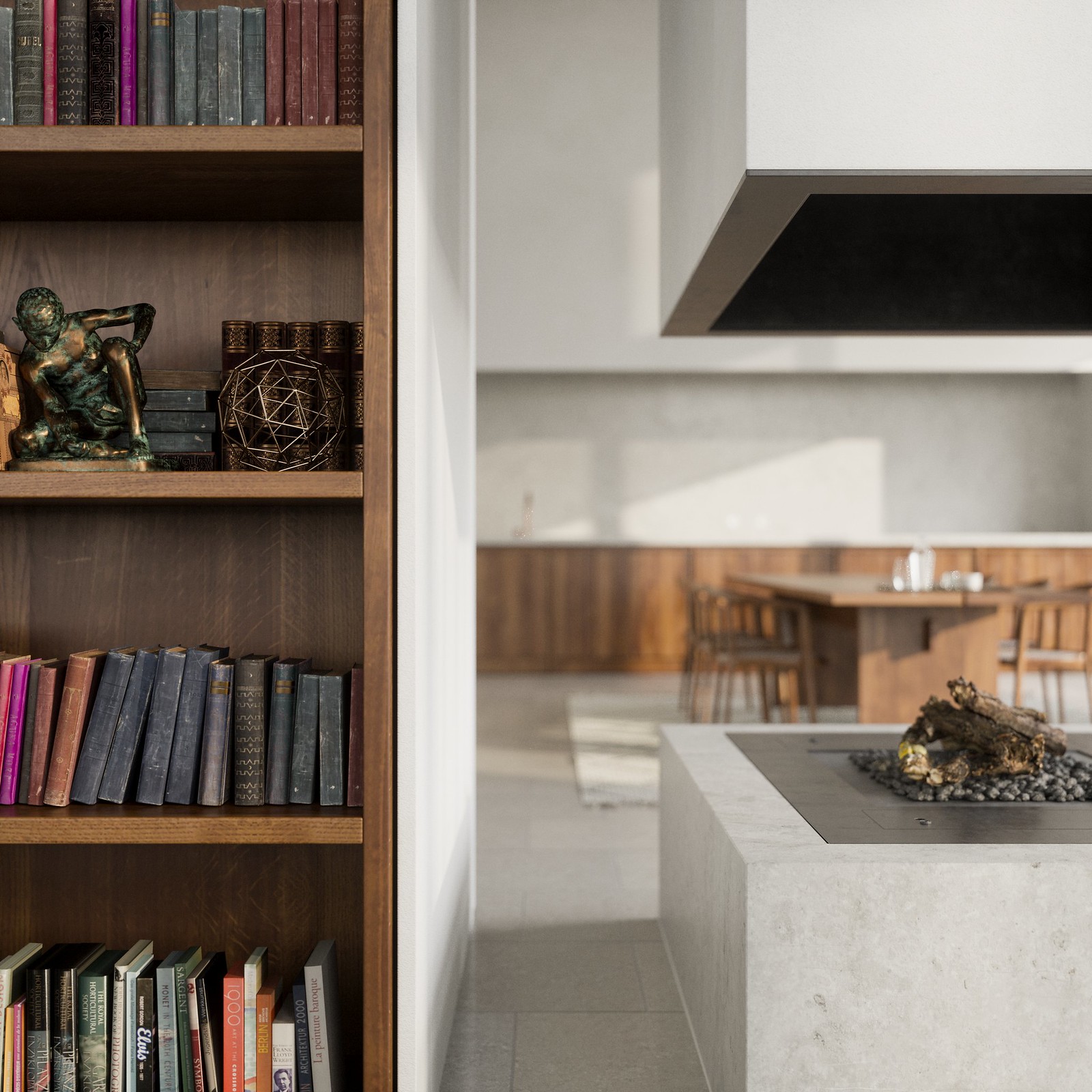Westkaai via FStorm
Recently, I was given the chance to try out FStorm, a GPU-only renderer being developed by Andrey Kozlov. I’d been intrigued by FStorm since seeing the work of Johannes Lindqvist and Daniel Reuterswärd, two of my favorite Archviz artists, who use it as their main renderer. After a few weeks of experimenting, I wanted to report some initial thoughts.
FStorm has a decent scene converter for Octane, V-Ray and Corona files, so my first step was to convert two V-Ray scenes, which turned out relatively nice with just a few manual tweaks (mainly for SSS materials):


But I also wanted to build an FStorm scene from scratch in order to explore the material workflow. For this, I picked a relatively simple setting: A minimalist interior by Hans Verstuyft Architects in a David Chipperfield tower in Antwerp. All the images below were tone-mapped in the FStorm real-time frame buffer and saved as .jpg, with no further post-production. Scroll down for a summary of my thoughts regarding FStorm.
Clearly, I’ve only scratched the surface of FStorm but here are a few initial thoughts based on this small project.
- I initially found FStorm to be slow for a GPU renderer when rendering interiors, but this was before I placed portals in my windows. This sped things up considerably. It’s been years since I had to work with portals in any renderer, so it felt strange to go back to them. But why not. They certainly work well here.
- Bearing this in mind, FStorm in very fast. I won’t make a direct comparison with V-Ray RT or Octane, but it always feels fluid, even on relatively large scenes. It’s particularly good at resolving DOF and bokehs quickly, which can take a long time in other renderers.
- FStorm has simple but effective tonemapping tools that pretty much remove the need for external post-production on stills. All images here were saved as .jpg from the frame buffer.
- Compared with V-Ray RT, I missed a good denoising tool, which is sometimes needed to take an almost-clean render over the finish line.
- I liked the fact that FStorm has essentially one material to cover pretty much all physical properties of real-life surfaces. This is a clear advantage over Octane, whose glossy material doesn’t have SSS and where glossy refraction and glossy reflection can’t be separated.
- I struggled to wrap my head around FStorm’s SSS settings, though the real-time feedback made it very easy to iterate.
- One big limitation of FStorm is that it supports none of 3ds Max’s built-in maps and offers only a small set of its own maps, some of which are pretty limited. Its falloff map, for instance, doesn’t allow users to draw a custom curve, which can be frustrating.
- I painfully missed a triplanar map. It hasn’t been too long since triplanar maps were introduced in V-Ray and Max, but it’s incredible how quickly I’ve come to find them completely indispensable.
- I found FStorm’s support for normal maps limited and frustrating. Essentially, I haven’t been able to make any asset using normal maps look good. The surface always looked weird. The FStorm bitmap is also missing some important functionalities when used as a normal map loader, such as the ability to flip green and red values (necessary for ZBrush-produced normal maps). For me, this was one of the most limiting aspects of FStorm given my high reliance on normal maps when using photoscanned assets or maps. Traditional bump maps work as expected.
Altogether, I found FStorm very pleasant to use. It gave me very fast feedback on this interior (perhaps the fastest of all real-time renderers I’ve tried so far) and I could generate final 2K images in about an hour each on a single 1080ti.
One caveat to bear in mind is that FStorm is a rental-only application and doesn’t offer permanent licenses. This may or may not bother you, depending where you stand in that debate. Regular readers of this blog know where I stand. I will just say the business model is the main reason why I didn’t look into FStorm earlier, and it will remain a big barrier for many potential users who, like me, would have taken the plunge much earlier had the option of a permanent license been available.

















Оставить комментарий
Ты должен быть Вход опубликовать комментарий.